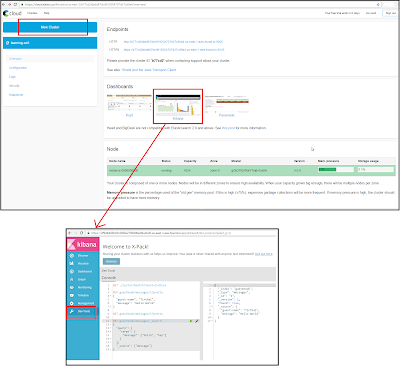I hope, you have
already read "Preface"
of my java power tools series. In this post, I intend to introduce WireMock
tool.
Straight from the horse's
mouth
- Mock your APIs for fast,
robust and comprehensive testing using WireMock (a simulator for
HTTP-based APIs / service virtualization tool / mock
server)
- Enables you to stay
productive when an API you depend on doesn't exist or isn't
complete
- Supports testing of edge
cases and failure modes that the real API won't reliably produce
- Features = HTTP response
stubbing, request verification, proxy/intercept, record/playback of stubs
and fault injection
- Flexible deployment options -
run it from within your Java application, JUnit test, Servlet container or
as a standalone process
- Powerful Request Matching -
Match request URLs, methods, headers cookies and bodies using a wide
variety of strategies & first class support for JSON and XML
- Record and Playback - Get up
and running quickly by capturing traffic to and from an existing API
My Personal Feedback
I witnessed that
WireMock's is extremely easy to setup and harness. This tool can benefit appreciably in MicroServices Architecture. Let me explain two scenarios, where I could take advantage of
WireMock.
(1) Create quick prototypes
of REST APIs
Many times, services
are not implemented by REST server apps or made available by external vendors.
Still, there is a pressing need to develop REST client app beforehand, may be
for demo purpose or meeting deliverable goals or due to any other business need.
Well, WireMock can help here to create prototypes of agreed APIs quickly, which
can be consume by client apps even without realizing these are stubbed APIs
instead of real. See running wiremock as a standalone process option.
(2) Record real external
services and playback
At times, client app
needs to consume third-party or external services over internet or network.
However, there are frequent connectivity issues or high latency problem or only
limited requests are supported per day due to chargeable services, specifically
while accessing these services in Development. Obviously, this may result in
high developer productivity loss. Well, WireMock has unique ability to record
real services (requests and responses) without a need of single line of coding
and playback those in even offline mode automatically. WireMock's this
record/playback of stubs feature can greatly boost developer productivity. See record and playback
option.
Other scenarios you
might want to consider WireMock for:
- Testing mobile apps that
depend on third-party REST APIs
- Injecting otherwise
hard-to-create errors in 3rd party services
- Any unit testing of code that
depends on a web service
All in all, WireMock
is a Java-based flexible library with a JSON API that can be used to
virtualize, mock, and stub web services.
Try WireMock Practically
Now let's understand
fundamental ability of WireMock by running it as a standalone HTTP server and
stubbing web services. Let's see practically how effortless it is.
ABC of WireMock standalone
server
- Start wiremock as a
standalone server: java -jar
wiremock-standalone-2.6.0.jar --port 9999 --verbose true
- This would create
"__files" and "mappings" folders (in the same folder
where wiremock jar exists) to store stubbed services. To see what all
service stubs exist on WireMock server (within "__files" and
"mappings" folders), open admin console in browser: http://localhost:9999/__admin/
- To stop
wiremock, just kill the process or post a request with an empty body to
this REST endpoint: http://localhost:9999/__admin/shutdown
- For more
detail, see @ http://wiremock.org/docs/running-standalone/.
Stubbing Services / Create
REST APIs Prototypes
A core feature of
WireMock is the ability to return canned HTTP responses for requests matching
criteria. These criteria can be defined in terms of URL, headers and body
content.
Record external services and
Playback
WireMock has the ability to create stub mappings by recording
them while you send requests. This can be used to quickly capture a collection
of responses from a real service then use them offline in your tests.
For Example, run this command to record and playback Github
Developer APIs:
For
any requested REST service request (i.e. http://localhost:9999/users/tirthalpatel),
first of all WireMock would check, if corresponding stub mapping exists in
"mappings" folder or not. If existing, then don't hit real service
rather serve recorded data from "mappings" and "__files"
folders. If not existing, then WireMock calls external real service (i.e. https://api.github.com/users/tirthalpatel)
followed by records stub mapping followed by returns response to the client.
That means, we can expect WireMock to playback all recorded stub mappings even
if internet is unavailable.
Also See
Disclaimer
I am not biased to
particular free or commercial tools, rather my objective is about sharing my
own experience on set of tools.










